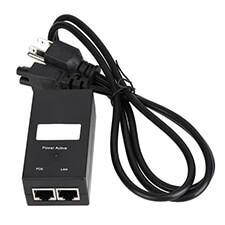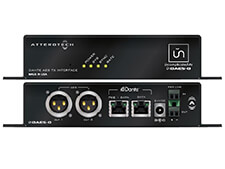PoE
Stands for "Power over Ethernet." PoE provides electrical current over an Ethernet connection. It powers electronic devices via Ethernet cabling without the need for batteries or a wall outlet.
Multiple PoE standards exist, but they all provide both data and electrical power over a single cable. One method, known as "Alternative A," uses the same wires within the Ethernet cable to transmit power and data. "Alternative B" uses one set of wires for sending power and another set of wires for transmitting data.
Technically, the PoE standards are defined as a subset of the IEEE 802.3 collection of standards. Examples include:
- 802.3af (2003) - supports 15.4 watts
- 802.3at (2009) - a.k.a "PoE+ or POE Plus;" supports 25.5 watts
- 802.3bt (2018) - Type 3 supports 55 watts; Type 4 supports 90 watts
In order to power a device via Ethernet, a PoE adapter is required. This device, also called an "Ethernet injector," plugs into a standard power outlet and provides power to one or more Ethernet ports. A broad range of PoE devices exist, including:
- VoIP phones
- Wireless access points
- Audio amplifiers
- Lighting controllers
- Security cameras
 Test Your Knowledge
Test Your Knowledge
